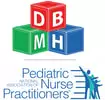Trauma or Stress-Related Disorders
Post-Traumatic Stress Disorder*
Adjustment Disorders
Acute Stress Disorder
Reactive Attachment Disorder
Disinhibited Social Engagement Disorder
Adjustment Disorders
Acute Stress Disorder
Reactive Attachment Disorder
Disinhibited Social Engagement Disorder
Persistent Complex Bereavement Disorder (previously known as Complex Grief)
- Onset > 12 months after death of loved one
- Yearning/Sorrow/Pre-occupation with deceased
- Reactive distress to the death
- Social/Identity disruption
- Significant distress or impairment
- Out of proportion to cultural norms
- Traumatic specifier
Assessment & Screening Tools
Self-Rated Tools
- Post-traumatic Stress Symptom (NSESS)
- Acute Stress Symptom (NSESS)
- ACE (Adverse Childhood Events) Questionnaire
- Traumatic Events Screening Inventory (TESI)
- Clinician-Administered PTSD Scale for DSM-5 - Child/Adolescent Version (CAPS-CA-5)
- UCLA Child/Adolescent PTSD Reaction Index for DSM-5
Position Papers & Practice Parameters
- AACAP Official Action: Practice Parameter for the Assessment and Treatment of Children and Adolescents With Post Traumatic Stress Disorder, April 2010
- Policy statement on Early Childhood Adversity, Toxic Stress, and the Role of the Pediatrician: Translating Developmental Science into Lifelong Health published by AAP Committee on Psychosocial Aspects of Child and Family Health, the Committee on Early Childhood, Adoption and Dependent Care, and the Section on Behavior and Developmental and Behavioral Pediatrics
Articles
- Identifying, Treating, and Referring Traumatized Children: The Role of Pediatric Providers, Judith A. Cohen, MD; Kelly J Kelleher, MD; and Anthony P. Mannarino, PhD, Archives of Pediatrics & Adolescent Medicine, 2008; 162(5):447-452
- AAP Open Access Collection: Toxic Stress on Children: Evaluation of Consequences
Resources
Quick links for Trauma or Stress-Related disorders:
FAQ's
Clinical hot topics
|
Organizations
For Parents/Caregivers
Books For Children
|
*Post-traumatic Stress Disorder is no longer characterized as an Anxiety Disorder beginning with DSM-V.
